We just saw last month what happened with Haman after his plot to kill Mordecai and the rest of the Jews. As we wrap up Esther, the events we will read about in the last few chapters should leave us relieved and a little unsettled. While God's people in Persia are about to be saved through a series of dramatic reversals, some concerning things happen. Let's take a look at what happens in Esther after Haman's death.
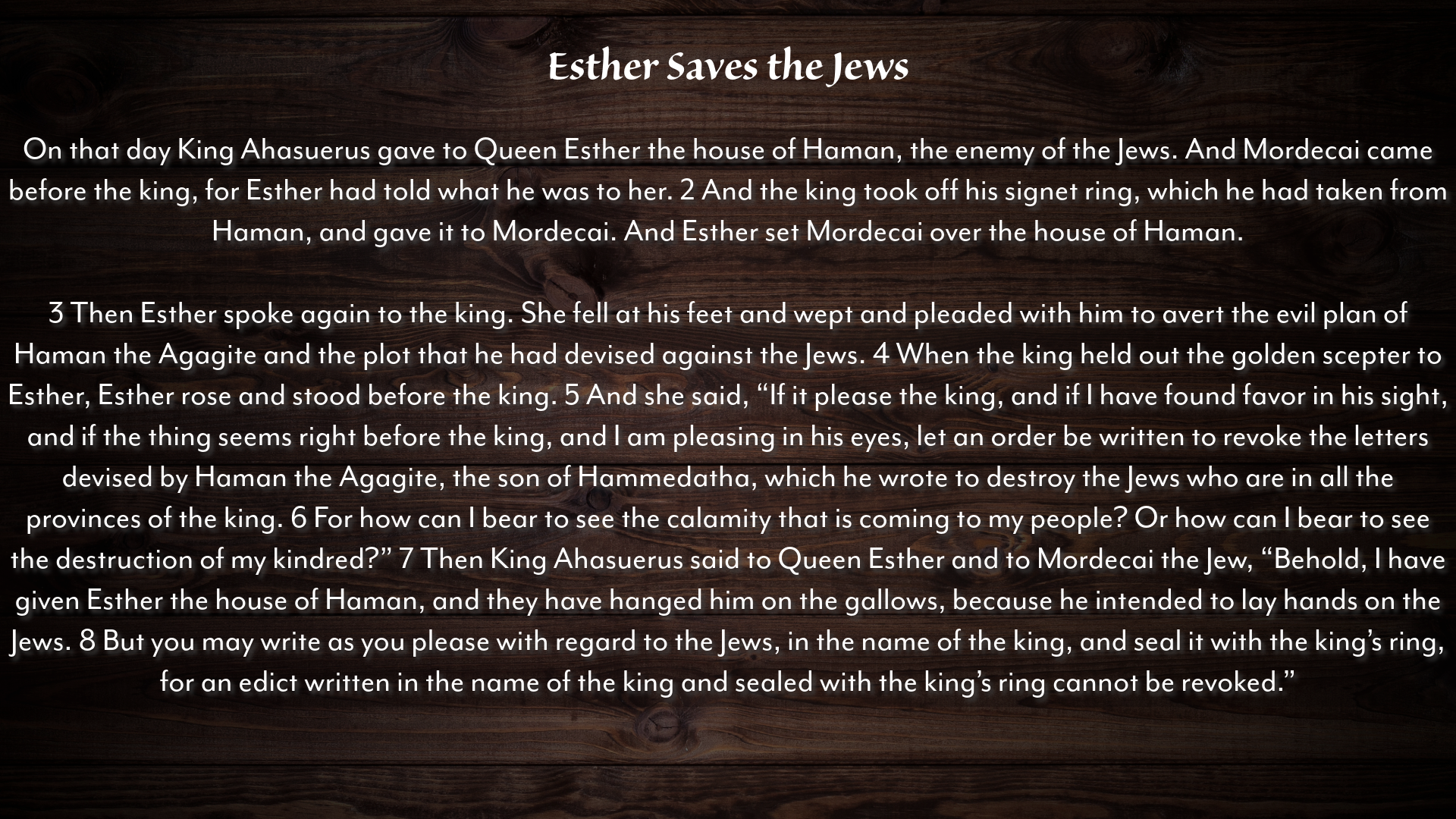
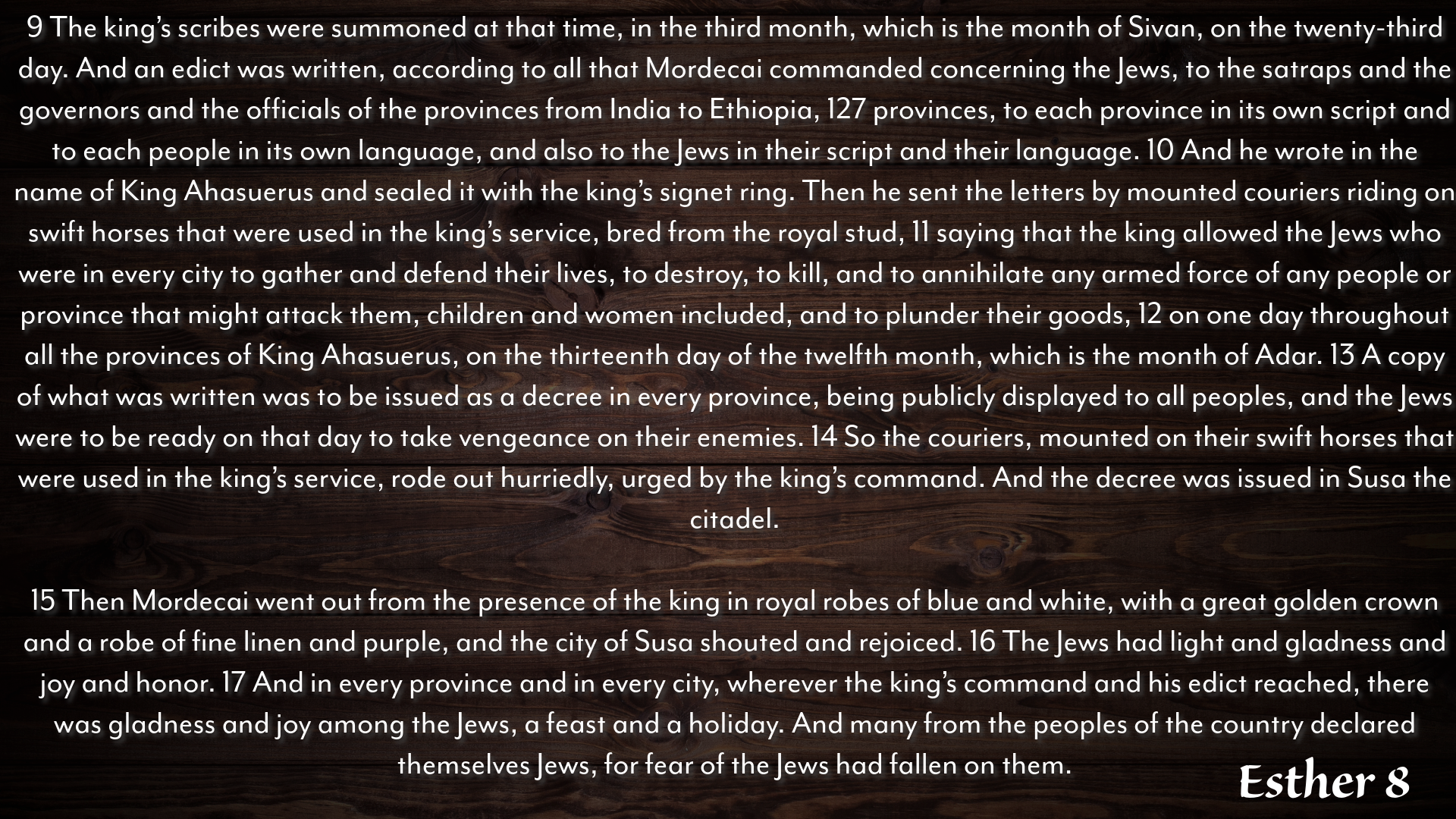
While Haman is dead, his edict to kill the Jews we read about earlier in Esther is still in effect. However, Esther and Mordecai gain the approval of Xerxes to reverse it. They change the edict to where the Jews can defend and avenge themselves against their enemies on that day. After the edict was reversed and announced to the people, Mordecai walked out of Xerxes' palace dressed like a Persian king instead of showing solidarity with his people. The rest of the Jews were celebrating because they saw themselves as saved from their enemies. The interesting thing is after the news of the reversal was spread, Persians throughout the empire declared themselves as Jews and showed solidarity by worshiping the God of Israel – they did this because they were now afraid of the Jews due to the power Mordecai had gained.
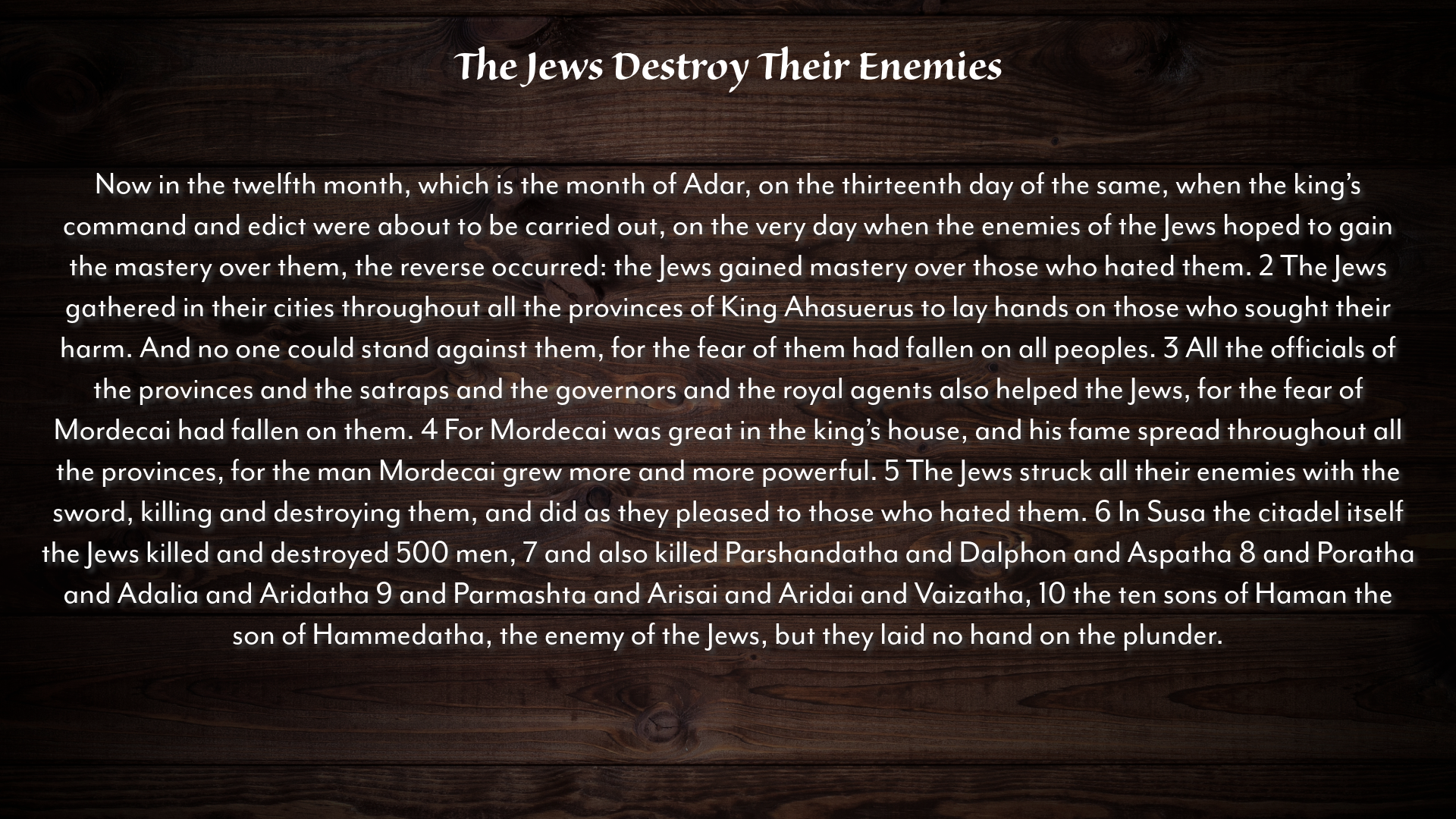
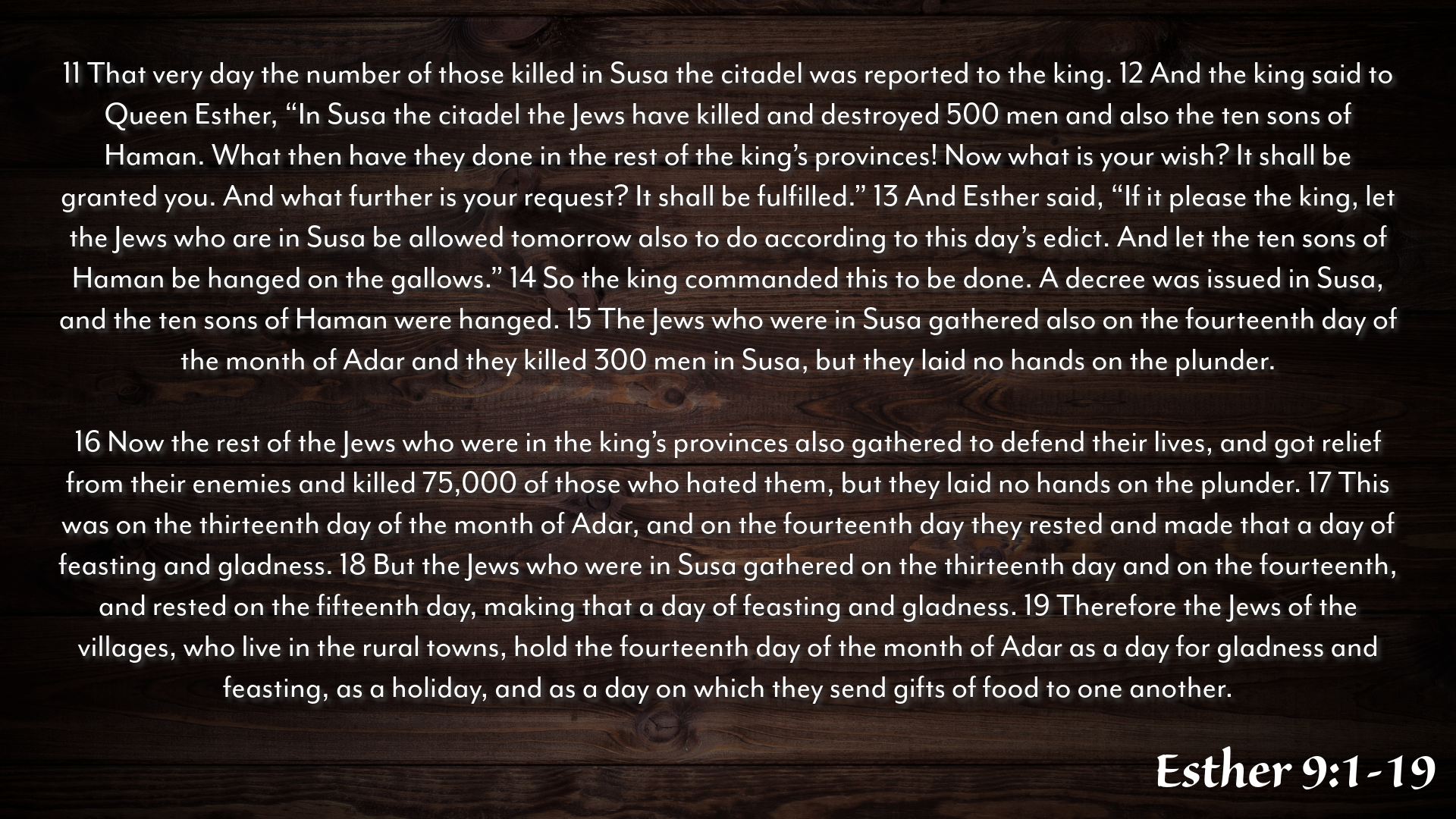
We see here that the tables have completely turned. The whole story of Esther was centered around the Persians having power over the Jews; however, now in this turn of events, the Jews destroyed the Persians. When Haman had set the edict to destroy the Jews, the Persians were allowed to take any plunder that they pleased. The same was true when the edict was changed to allow the Jews to protect themselves – the Jews were allowed to take any plunder they wished from the Persians. But we see in verse 16 that the Jews didn't take any plunder from the Persians.
This wasn’t a war of revenge, instead it was a war that tried to reverse the sin of Israel's first king, Saul. In 1 Samuel 15:9, Saul didn't follow God's commands and spared the forefather of Haman's sons and plundered his land. As the Jews started gaining more power in Persia, they were cautious to not repeat the same sin of Saul's kingdom. The unsettling aspect of this situation is that God did not approve or command this new war with Persia. Esther even asks for another day of vengeance in the Persian capital (see verse 13) AND wants the dead bodies of Haman's sons to be publicly displayed next to their father. Again, all of this was their own doing, not under God's command.
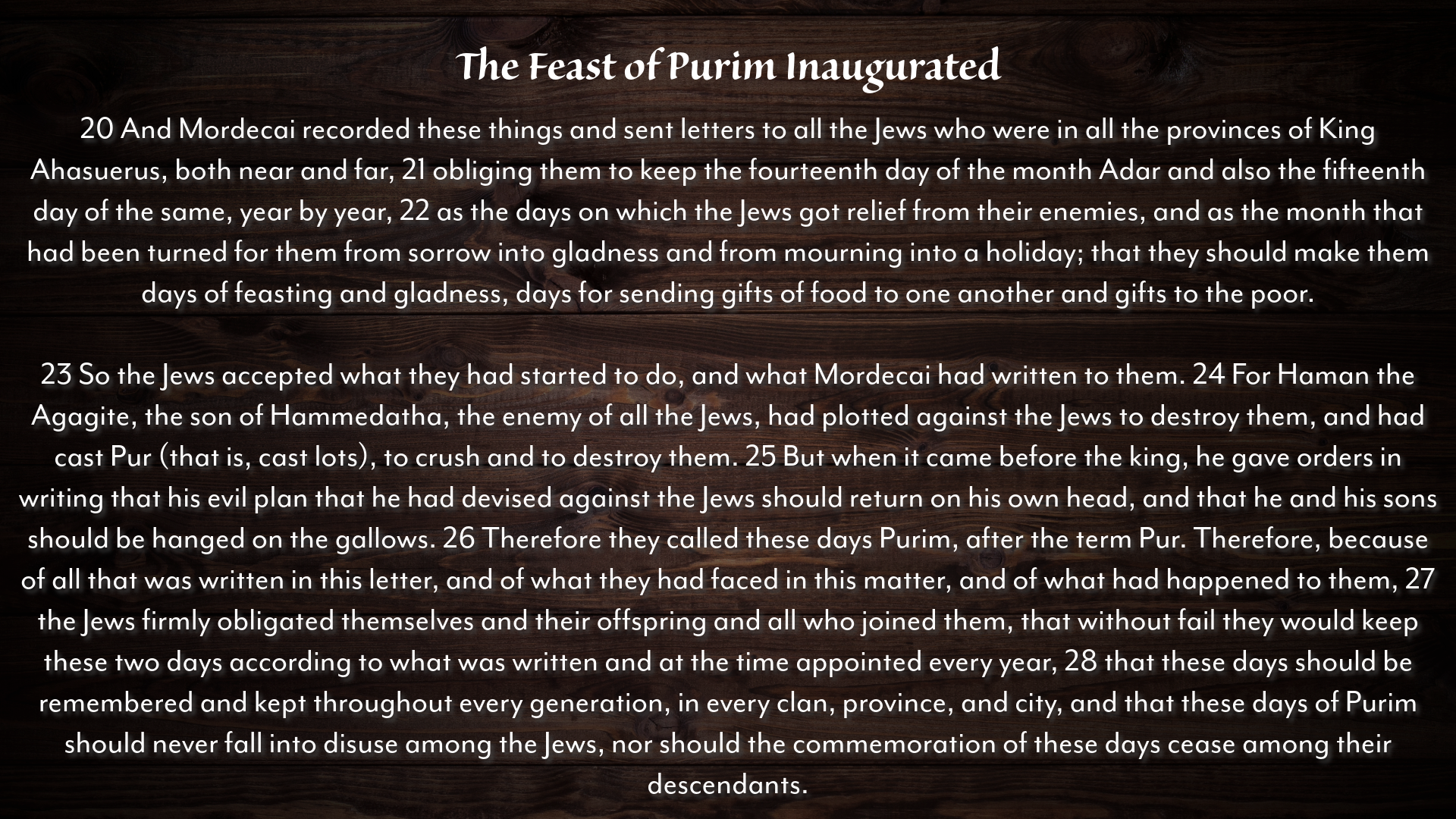
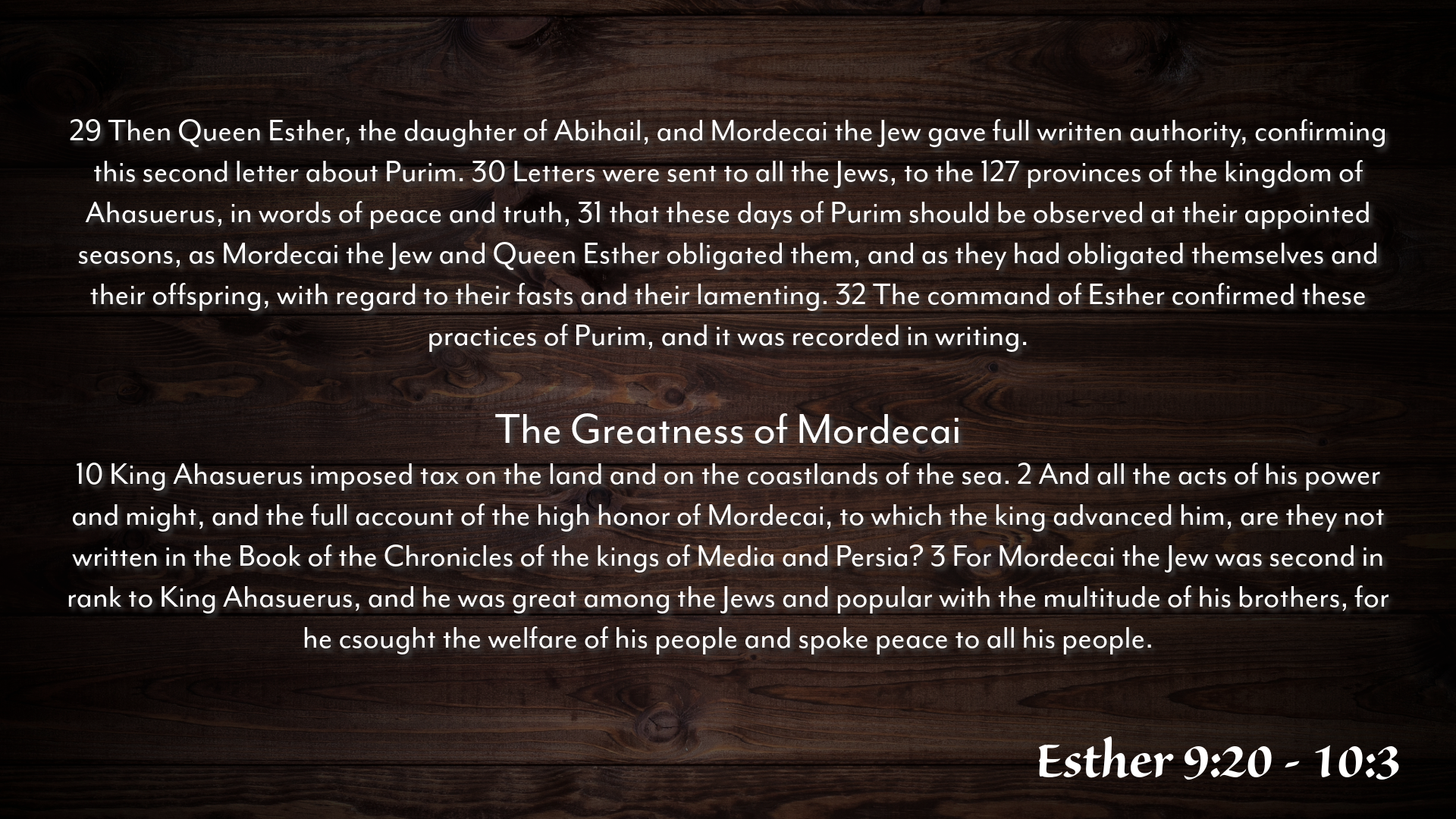
After the Persians are defeated, Mordecai has a celebratory feast just like the Persian feasts we saw at the beginning of the book of Esther. The feast was called "Purim" after the lots Haman used – marking the end of them being objects of death and instead objects of life and victory. Purim is also the only Jewish feast in Scripture that is not directly established by God, which goes hand in hand with the unsanctioned war against the Persians in the first place.
The book of Esther ends with Xerxes still on the throne. Mordecai was given the same seat of power that Haman had when he plotted the Jew's destruction.
While this might seem like a happy ending in Esther – seeing the Jews delivered from their enemy after everything Esther and Mordecai did, I mentioned at the beginning of the blog that there are some things that should leave us unsettled. Yes, Esther and Mordecai are heroes, but just like everyone, they still weren't fully obedient to God:
- At the beginning of Esther, Esther hid her Jewishness and abandoned Jewish law.
- We see Mordecai in 8:15 dressed in trappings of the Persian empire instead of showing solidarity with his people.
- Esther called for the bodies of Haman's sons to be publicly shamed after a day of unprovoked vengeance.
As we wrap up this series through Esther (and Daniel), we've seen those who have the power to act on God's behalf instead act like the rulers who oppress them. But there's good news! Even when people do wrong (which happens a lot), God can still use His power for good!
Cornerstone Impact Update
Have you been following our series since June, Invested with Purpose? We've been looking through the birth of Biblically Responsible Investing and what it takes to be "invested with purpose." In part 5 of the series, we looked at the importance of a name and Art Ally's testimony.






